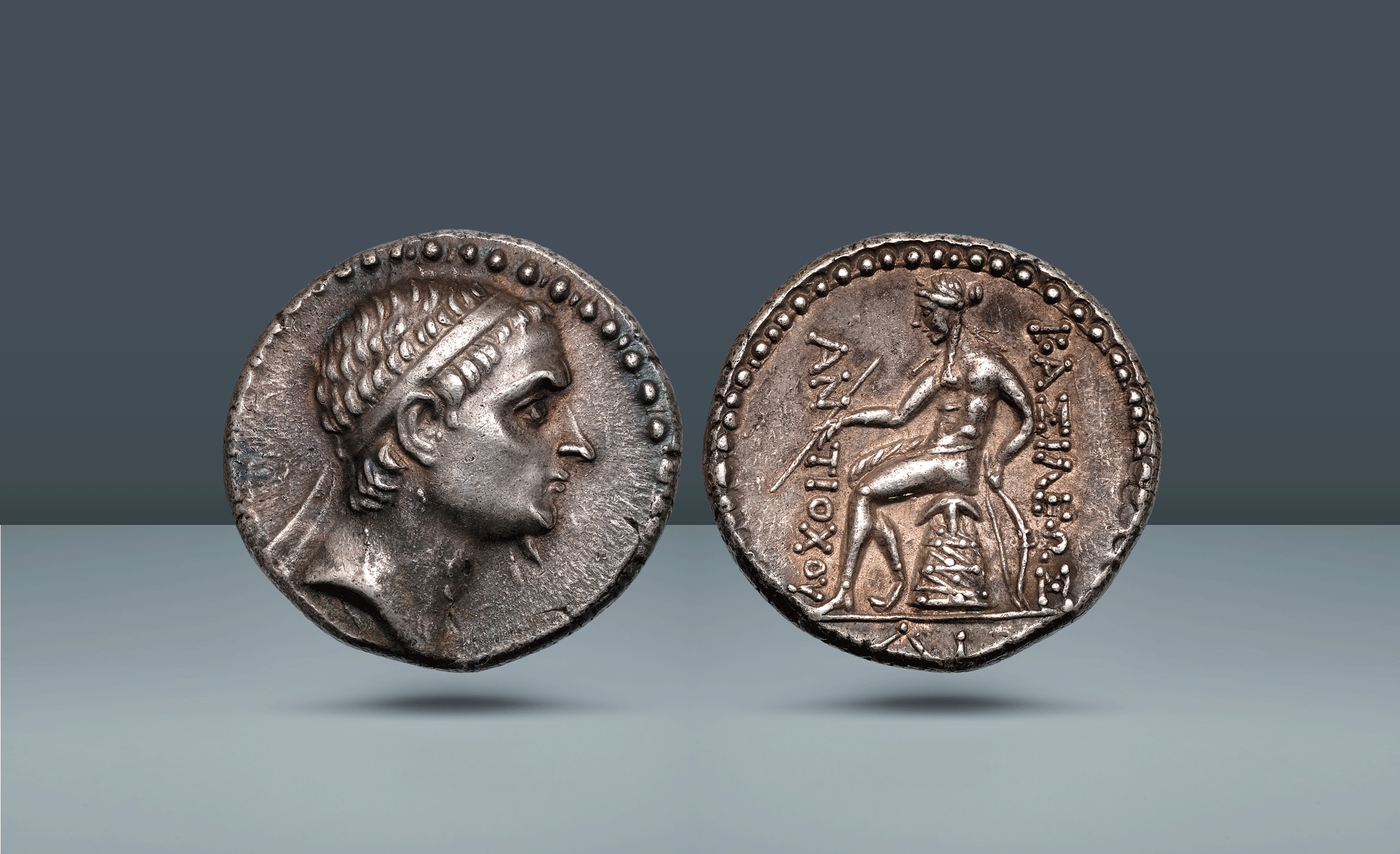Seleucid Empire, Syria. Antiochus III, "the Great", 223-187 BC ”ΔI mint”, c. 197-187 BC
Seleucid Empire, Syria. Antiochus III, "the Great", 223-187 BC ”ΔI mint”, c. 197-187 BC
AR Tetradrachm, 17.10g (27mm, 12h).
Diademed head of Antiochus III r., older portrait with short hair lying close to skull, hairline treatment ranging from bangs with slight break to receding at temple. Fillet border / BAΣIΛEΩΣ – AN – TIOΧOY Apollo seated l. on omphalos, testing arrow in r. hand and resting l. arm on grounded bow; in exergue, ΔI.
Pedigree: From the Medicus collection
References: ESM 608 (these obverse die). SC 1112 (this coin illustrated).
Grade: Sharply struck with lovely toning. EF
gk1985
Scroll down for more information about this coin.
Ever since Seleucus I marched across the east and received 500 war elephants from Chandragupta, the founder of the Mauryan Empire in India, the war animals played an outsized part on the military stage of the middle east. This was not different when Antiochus III ascended to the throne. The young king was however faced with a disintegrating realm and was forced to fight near constant battles against domestic and foreign foes. At one point between 211 and 204 BC, in his attempt to style himself after Seleucus, Antiochus III reached the borders of India while on campaign. After defeating the rebellious Euthydemus of Bactria, Antiochus crossed the Caucus mountains to meet Sophagesenus. According to Polybius, he “received more elephants, raising their number to a total of one hundred and fifty”.
While a far cry from what his ancestor received from Chandragupta, these animals would become a vital part of Antiochus’s military and propaganda machine until he was defeated by Rome during the 191 BC Battle of Thermopylae and 190 BC Battle of Magnesia. He was then forced to surrender his elephants to the Romans as a condition of the Treaty of Apamae.

